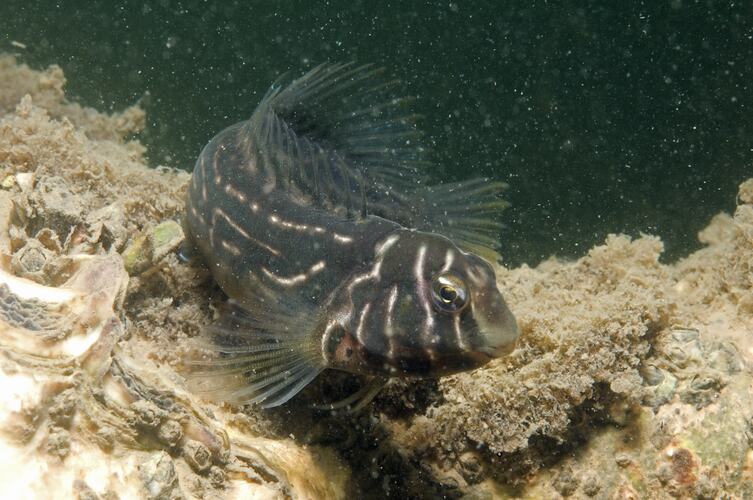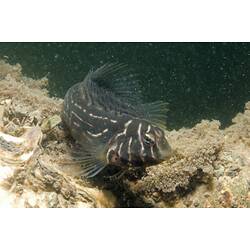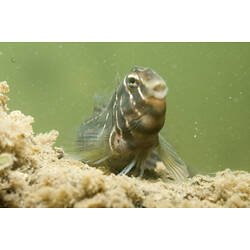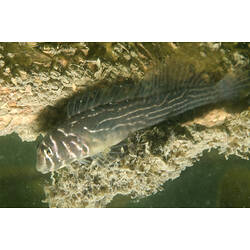General Description
Compressed slender body with a long-based dorsal fin and pelvic fins each reduced to a spine and two rays. Males have a prominent fleshy crest on the head and elongate rays on the rear of the dorsal fin. Olive-green with black spots on side. Usually 6 cm long; up to 9 cm long (head to tail tip).
Biology
Oyster Blennies are common in estuaries where they usually occupy empty oyster or mussel shells. They are also found amongst encrusting worm tubes in the intertidal zone in southern Australia.
Distribution
New Zealand and eastern Australia, except Tasmania.
Habitat
Shallow shell beds, and areas with encrusting worm tubes, especially in bays and estuaries.
More Information
-
Animal Type
-
Animal SubType
-
Brief Id
Thin dark green body, long dorsal fin, pectoral fins reduce to naked fin rays at tips.
-
Habitats
-
Diet
Carnivore
-
Diet Categories
Crustaceans, Worms
-
Endemicity
-
Commercial
No
-
Conservation Statuses
CITES: Not listed, FFG Threatened List: Not listed, EPBC Act 1999: Not listed, IUCN Red List: Least Concern
-
Depths
Shallow (1-30 m)
-
Water Column Locations
On or near seafloor
-
Taxon Name
-
Scientific Author
(Valenciennes, 1836)
-
Common Name
Oyster Blenny
-
Kingdom
-
Phylum
-
Subphylum
-
Superclass
-
Class
-
Order
-
Family
-
Genus
-
Species Name
anolius




